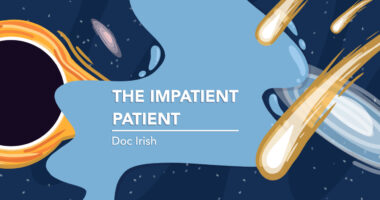New Law Aims to Speed Approval of Experimental Treatments Like Stem Cell Therapies

President Obama recently signed into law the $6.3 billion 21st Century Cures Act, giving the U.S. Food and Drug Administration (FDA) more leeway to work with pharmaceutical companies and evaluate new treatments, including stem cell therapies.
The “Moonshot” bill, named in memory of Vice President Joe Biden’s son Beau, who lost his life to cancer, is a grab-bag of items that also calls for increases in medical research funding and aims to overhaul federal mental healthcare policies.
Under the new law, the FDA can accelerate regulatory pathways in evaluating regenerative medical treatments, including stem cell therapies, while still maintaining the agency’s efficacy and safety standards.
The 21st Century Cures Act may significantly impact the discovery of new treatments for many conditions, including Parkinson’s disease.
“Adult stem cells are potentially the most diverse and effective healing agents ever known,” Dr. Steven Brody, chief scientific officer of StemGenex, said in a press release. “They have been proven to treat an astounding variety of conditions, ranging from injuries to chronic, debilitating diseases.”
During a September FDA public hearing about the future regulation of stem cell therapies, Brody emphasized the importance of a regulatory path that ensures the safety of patients while also accelerating patients’ access to stem cell therapies.
Nine patients that used StemGenex stem cells treatments testified at the hearing about their experience with adipose stem cell therapy and the change the treatment made to their symptoms in Parkinson’s disease, rheumatoid arthritis and multiple sclerosis.
“The 21st Century Cures Act speaks very loudly for patients with unmet clinical needs who have little or no other available treatment options,” Brody said. “Patients’ voices were heard and taken seriously.”
The new legislation will have a positive impact on regenerative medicine and stem cell therapies. For instance, the law directs the FDA to consider “real world evidence” allowing evidence of study data instead of full records from clinical trials.
In addition the FDA and stakeholders will work jointly on standards development. And for risk-benefit assessment of new therapies, data such as patient registries and electronic health records will be considered in addition to the formal clinical trial process.
“This important piece of legislation will potentially unleash many more treatment options, including stem cell treatment, to those suffering with incurable diseases,” said Rita Alexander, chief administrative officer of StemGenex Medical Group. “This bill is a victory for the average person fighting a disease.”
The bill enjoyed wide bipartisan support and was given a thumbs-up by university research facilities, patient advocates, and the pharmaceutical and medical device industry.
Critics of the new law said it would lead to less-stringent FDA regulations, putting patients at risk.
The bill includes $4.8 billion for biomedical research funding, of which $1.8 billion is for cancer research — a part of the bill that was renamed the “Beau Biden Cancer Moonshot.” Beau Biden died of a brain tumor.
The bill also includes $1 billion for opioid abuse prevention.






